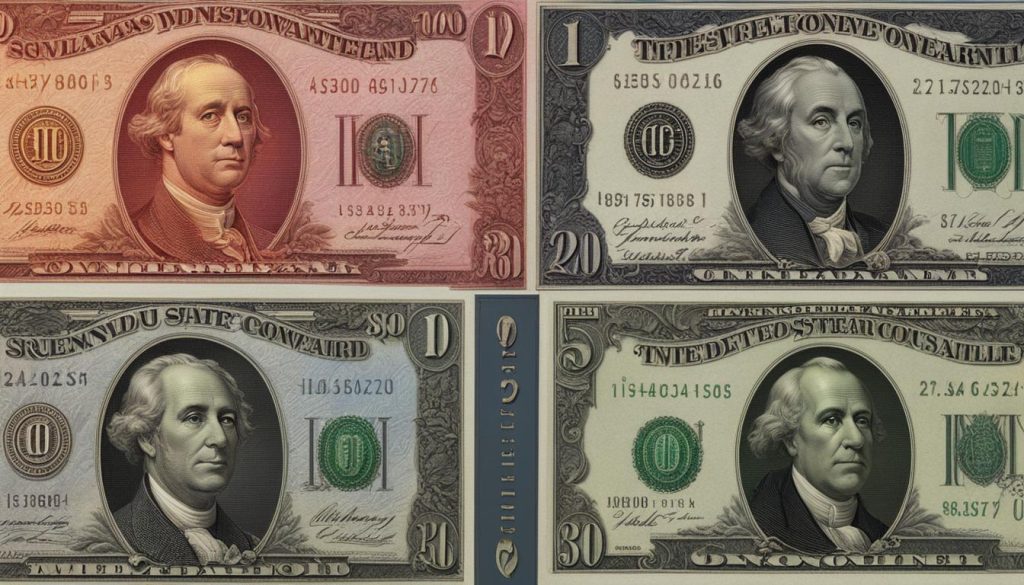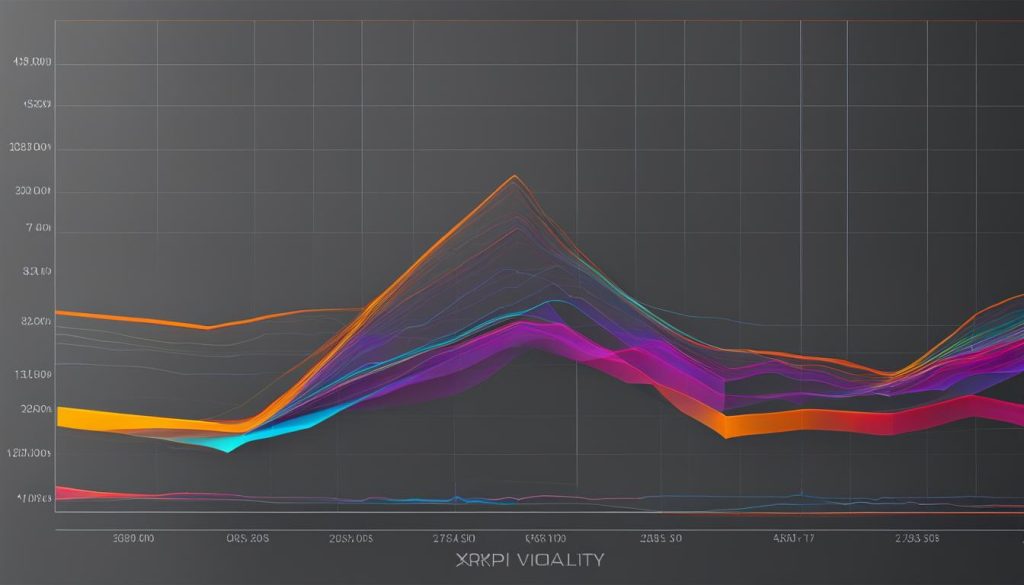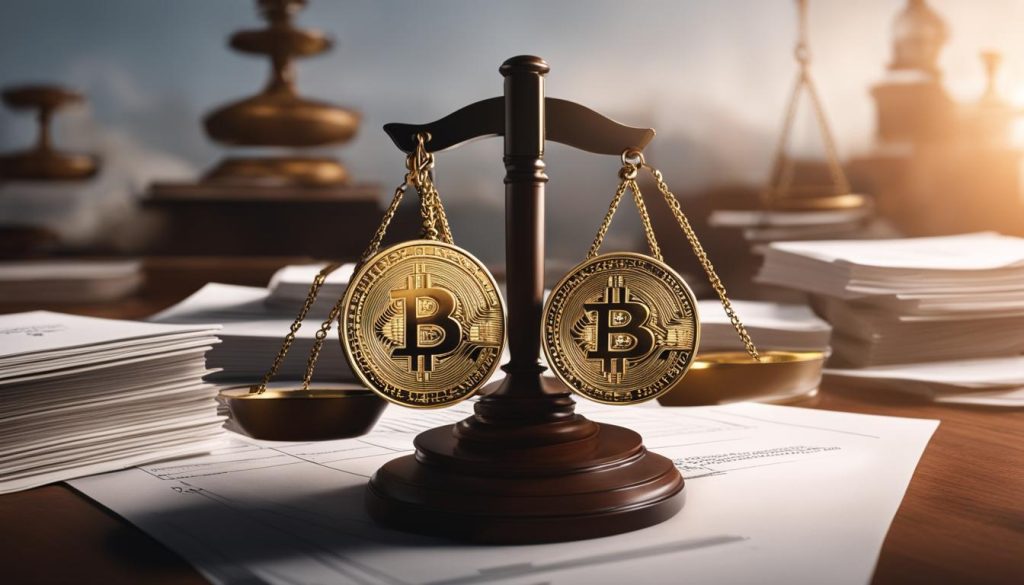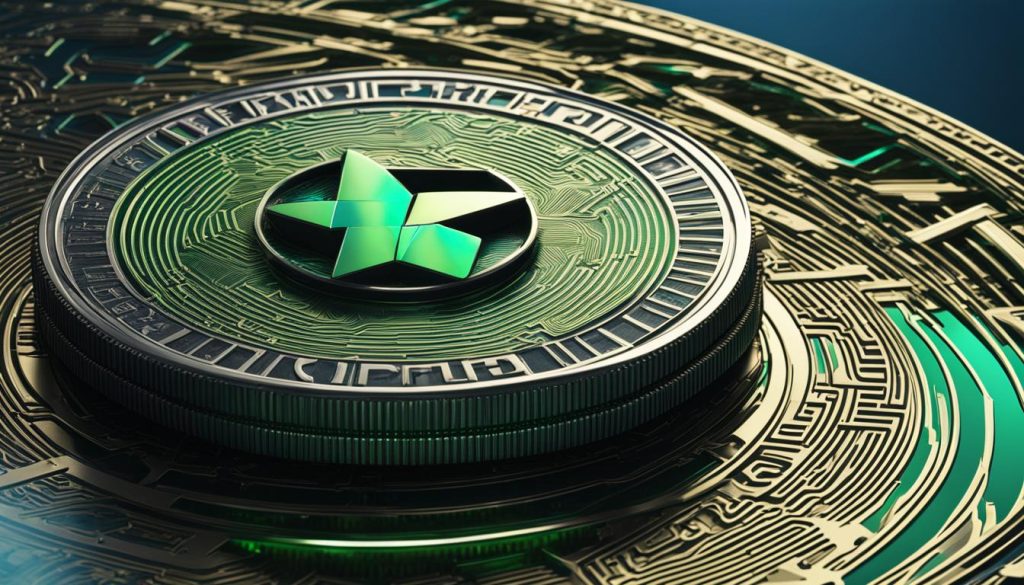Are you familiar with XRP, Ripple’s cryptocurrency? If not, you’ve come to the right place. In this comprehensive guide, we’ll delve into the world of XRP, exploring its history, functionality, advantages, and potential challenges. Whether you’re a seasoned investor or simply curious about cryptocurrencies, this article will provide you with valuable insights into the fascinating world of XRP.
Key Takeaways:
- XRP is a cryptocurrency used by Ripple Labs for global financial transfers and currency exchange.
- It operates on its decentralized XRP Ledger, offering faster transaction times and lower energy consumption compared to Bitcoin.
- Ripple, the company behind XRP, aims to revolutionize global payments and has gained adoption from major financial institutions.
- XRP’s price and market volatility are influenced by various factors, including market demand and regulatory developments.
- Investing in XRP requires careful consideration of its advantages, disadvantages, and staying informed about the latest news and developments.
The History of XRP and Ripple
Ripple, originally called Ripplepay, was founded in 2004 by Ryan Fugger. In 2012, the XRP Ledger was launched as a solution to the limitations of Bitcoin. Ripple changed its name multiple times before settling as Ripple in 2015. Ripple is a centralized fintech company that aims to make global transactions easier, faster, and more secure. It has gained adoption from various financial institutions and has a network of partners using its payment protocol, RippleNet.
Ripple’s vision is to enable the Internet of Value, where money can be moved instantly and securely anywhere in the world, just like information flows in today’s digital age.
RippleNet, Ripple’s payment protocol, connects financial institutions and facilitates cross-border transactions. It provides a standardized and efficient way for banks to send money globally. RippleNet adoption has been growing steadily, with over 300 financial institutions across the globe utilizing Ripple’s technology for faster, more cost-effective transactions. Some notable partners include American Express, Santander, Standard Chartered, and MoneyGram.
The Benefits of RippleNet
One of the key advantages of RippleNet is its ability to provide real-time visibility and certainty in cross-border transactions. Traditional international transfers can be slow and costly, with multiple intermediaries involved. With RippleNet, transactions are settled instantly, enabling greater efficiency and transparency. Additionally, RippleNet offers lower transaction fees compared to traditional banking systems, making it an attractive option for financial institutions looking to streamline their payment processes and reduce costs.
RippleNet’s decentralized architecture also enhances security, as it eliminates the single point of failure often associated with centralized systems. The use of blockchain technology ensures that transactions are immutable and tamper-proof, providing an added layer of trust and integrity.
| RippleNet Benefits | Description |
|---|---|
| Instant Transactions | RippleNet enables near-instant settlement of cross-border transactions, providing faster access to funds and improved liquidity management. |
| Lower Costs | RippleNet’s low transaction fees and elimination of intermediaries result in cost savings for financial institutions, which can be passed on to end-users. |
| Enhanced Security | The decentralized nature of RippleNet and its use of blockchain technology ensure the security and integrity of transactions. |
As Ripple continues to expand its network of partners and drive innovation in the financial industry, the adoption of RippleNet is expected to grow further, revolutionizing the way global transactions are conducted.
XRP Token and XRP Ledger
The XRP token plays a crucial role within Ripple’s ecosystem, operating on the XRP Ledger that powers the company’s payment network. Designed to facilitate transactions, serve as a settlement layer, and provide liquidity solutions, XRP offers unique utility and benefits.
Ripple holds 55 billion XRP tokens in an escrow account, releasing a portion each month to maintain a stable supply. This approach helps address concerns about potential market impact from large-scale token releases.
Within the Ripple ecosystem, XRP has diverse use cases. It enables faster and more cost-effective cross-border payments, making it an attractive solution for financial institutions seeking to streamline their international transactions. XRP can also facilitate remittances and asset exchange, providing liquidity solutions for different market participants.
The XRP Ledger, on the other hand, is a decentralized blockchain that offers scalability, fast transaction times, and low energy consumption. It is built on Ripple’s technology and provides a secure and efficient platform for processing XRP transactions.

Ripple Escrow
Ripple’s escrow mechanism plays a crucial role in maintaining price stability and instilling confidence in the XRP market. By locking up a significant portion of XRP tokens, Ripple helps mitigate concerns about market manipulation and excessive token supply.
With the escrow account, Ripple releases a predetermined amount of XRP each month, ensuring a controlled and predictable distribution. This approach allows market participants to anticipate token availability and plan their strategies accordingly.
Ripple Ecosystem and XRP Use Cases
Ripple’s ecosystem encompasses a wide range of financial institutions, payment providers, and other partners who leverage its technology and XRP for various purposes. The company’s goal is to revolutionize global payments and make financial transactions faster, more efficient, and more secure.
Besides cross-border payments and remittances, XRP has the potential for use in other industries and applications. For example, it can facilitate micropayments, enabling seamless transactions in the digital economy. XRP can also serve as a bridge currency, facilitating the exchange of different assets and currencies without the need for multiple intermediaries.
| XRP Use Cases | Benefits |
|---|---|
| Cross-border payments | Fast, cost-effective, and secure transactions |
| Remittances | Efficient transfer of funds across borders |
| Asset exchange | Liquidity solutions for different market participants |
| Micropayments | Enabling seamless transactions in the digital economy |
| Bridge currency | Facilitating asset and currency exchange without intermediaries |
Ripple’s technology and the utility of XRP continue to evolve, with ongoing developments in the financial industry and the broader cryptocurrency ecosystem. As adoption expands and new use cases arise, the potential for XRP to transform global payments becomes increasingly significant.
XRP vs. Bitcoin: A Comparison
When comparing XRP and Bitcoin, there are several key differences to consider. These differences lie in their consensus mechanisms, transaction speeds, scalability, security, and network structure. Understanding these distinctions can help you make informed decisions when it comes to investing in cryptocurrencies.
Consensus Mechanism
XRP utilizes a unique consensus mechanism known as the Ripple Consensus Algorithm (RCA). This mechanism relies on a network of trusted validators, providing faster transaction confirmations and lower energy consumption. In contrast, Bitcoin relies on the proof-of-work mechanism, which involves miners solving complex mathematical puzzles to validate transactions. This process can lead to longer confirmation times and higher energy consumption.
Transaction Speed and Scalability
One of the key advantages of XRP is its impressive transaction speed. XRP can settle transactions in just a few seconds, making it ideal for quick and efficient global transfers. Bitcoin, on the other hand, typically takes around 10 minutes to confirm transactions. Additionally, XRP’s scalability is considered superior to Bitcoin’s, as the XRP Ledger can handle a significantly higher number of transactions per second.
Security and Network Structure
Both XRP and Bitcoin employ robust security measures, but their approaches differ. XRP’s network relies on trusted validators to maintain the integrity of transactions, while Bitcoin relies on miners to secure the network through the proof-of-work mechanism. While both systems have proven to be secure, the centralized nature of XRP’s validator network has raised some concerns among cryptocurrency enthusiasts who value decentralization.
In summary, XRP and Bitcoin offer different solutions for global financial transactions. XRP’s unique consensus mechanism, faster transaction speed, and scalability make it a compelling option for efficient payments. Bitcoin, on the other hand, remains the leading cryptocurrency with a strong track record. Ultimately, the choice between XRP and Bitcoin depends on your specific requirements and investment goals.

XRP Price and Market Volatility
The price of XRP, like many cryptocurrencies, has experienced significant volatility over the years. Its price reached an all-time high during the 2017-2018 crypto bull market, reaching a peak of $3.84 per XRP token. However, since then, the price has declined, and XRP has faced downward pressure due to market factors and regulatory challenges.
It’s important to conduct thorough XRP price analysis to understand the current market trends and make informed decisions. Factors that can influence the price of XRP include market demand, investor sentiment, regulatory developments, and overall market conditions. The XRP community closely follows these factors and engages in discussions and debates about XRP’s price prediction and future outlook.
The XRP community is a vibrant and active group of individuals who are passionate about the potential of XRP and Ripple’s technology. They often share insights, news, and predictions about XRP’s price and its role in transforming global financial transactions. Engaging with the XRP community can provide valuable perspectives and information for traders and investors.
While XRP’s price has shown volatility in the past, it’s worth noting that the mechanism of XRP transactions does not require transaction fees. This unique feature positions XRP as a deflationary asset, potentially adding to its long-term value proposition. However, market volatility should always be considered, and it’s advisable to stay informed and up-to-date with the latest news and developments in the XRP market.
Table: XRP Price Performance
| Year | Average XRP Price |
|---|---|
| 2015 | $0.008 |
| 2016 | $0.006 |
| 2017 | $0.256 |
| 2018 | $0.509 |
| 2019 | $0.296 |
| 2020 | $0.244 |
| 2021 | $0.578 (as of June) |
 Note: The table above provides an overview of average XRP prices from 2015 to 2021. Please note that cryptocurrency prices are highly volatile and subject to change.
Note: The table above provides an overview of average XRP prices from 2015 to 2021. Please note that cryptocurrency prices are highly volatile and subject to change.
The Regulatory Challenges and SEC Lawsuit
Regulatory challenges have been a significant hurdle for Ripple and its associated cryptocurrency, XRP. One of the most notable events in this regard is the lawsuit filed by the United States Securities and Exchange Commission (SEC) against Ripple in December 2020. The SEC alleged that Ripple’s sale of XRP tokens constituted the sale of unregistered securities, a violation of securities laws. This lawsuit has had far-reaching implications in the cryptocurrency industry, as it questions the regulatory status of various digital assets.
As the litigation continues, Ripple has staunchly defended its position and has filed a motion to dismiss the lawsuit. The outcome of this legal battle could have profound implications not only for Ripple and XRP but also for the broader cryptocurrency market as a whole. It is important to note that the regulatory landscape for cryptocurrencies is still evolving, with regulatory agencies such as the SEC and FinCEN closely monitoring the industry to ensure compliance and investor protection.
While the SEC lawsuit poses challenges for Ripple and XRP, it also highlights the need for clearer regulations and guidelines surrounding digital assets. Regulatory clarity would provide a more stable and predictable environment for companies and investors operating in the cryptocurrency space. As discussions continue and regulatory frameworks are established, the future of XRP and its legal status will likely become clearer, shaping the path forward for Ripple and the cryptocurrency industry as a whole.

The SEC Lawsuit Against Ripple
“The SEC lawsuit against Ripple has brought attention to the regulatory challenges faced by the cryptocurrency industry. This legal battle will have implications beyond Ripple and XRP, as it may set a precedent for how other cryptocurrencies are regulated in the future.” – Industry Expert
Investing in XRP
When considering investing in XRP, it’s important to understand the factors that can impact its value and the potential risks involved. XRP is a cryptocurrency that operates on Ripple’s payment network and has gained adoption from various financial institutions. By investing in XRP, you’re essentially betting on its future adoption and success as a payment system.
One key factor to consider is the adoption of XRP. The more financial institutions and businesses that integrate XRP into their operations, the greater its potential for growth and value appreciation. Keeping an eye on news and updates about XRP adoption can provide valuable insights into its investment potential.
Another important aspect is staying informed about XRP news and developments in the cryptocurrency market. The crypto industry is highly volatile, and news events can have a significant impact on the price and market sentiment of XRP. By staying up to date with the latest news, you can make more informed investment decisions.
It’s also crucial to assess your own risk tolerance and investment goals before investing in XRP. Cryptocurrencies, including XRP, can be highly volatile and subject to market fluctuations. Understanding your risk appetite and setting realistic expectations can help you make investment decisions that align with your financial goals.
| Factors to Consider when Investing in XRP | Risk Level | Potential Returns |
|---|---|---|
| XRP Adoption | Medium | High |
| Market News and Developments | High | Medium |
| Personal Risk Tolerance | Low to High | Low to High |
Investing in XRP requires careful consideration and research. While it has the potential for high returns, it also carries inherent risks. Staying informed, assessing market news and developments, and understanding your own risk tolerance can help you make more informed investment decisions.
The Advantages of Ripple and XRP
Ripple and XRP offer several advantages that make them attractive options for global financial transactions. These advantages include:
- Fast Settlement Times: Ripple’s network, RippleNet, enables quick transaction settlement, allowing for faster and more efficient payment processing compared to traditional methods. This can greatly benefit businesses and individuals seeking to transfer funds internationally or make cross-border payments.
- Low Transaction Fees: Ripple’s ecosystem and XRP token provide a cost-effective solution for financial transactions. The low transaction fees associated with using XRP make it an appealing choice for businesses and individuals looking to minimize transaction costs and improve their bottom line.
- Accessibility for Financial Institutions: RippleNet has gained adoption from major players in the financial industry, including banks and payment providers. This widespread adoption means that businesses and individuals can easily connect and transact with different financial institutions, facilitating seamless cross-border payments and asset exchange.
- Liquidity Solutions: XRP, as the native token of the XRP Ledger, offers liquidity solutions within Ripple’s ecosystem. This means that financial institutions can utilize XRP to bridge different currencies and facilitate efficient and cost-effective transfers. The ability to provide liquidity for multiple currencies is a valuable feature that sets Ripple and XRP apart from other cryptocurrencies.
“Ripple and XRP offer fast settlement times, low transaction fees, and accessibility for financial institutions.”
– Industry Expert
It is important to note that the advantages of Ripple and XRP are not without their limitations. The centralized nature of the Ripple network and concerns about the large supply of XRP are points of criticisms that have been raised. However, the benefits provided by Ripple and XRP in terms of fast settlement, low fees, accessibility for financial institutions, and liquidity solutions make them an intriguing option for individuals and businesses involved in global financial transactions.
| Advantages | Ripple | XRP |
|---|---|---|
| Fast Settlement Times | ✓ | |
| Low Transaction Fees | ✓ | |
| Accessibility for Financial Institutions | ✓ | |
| Liquidity Solutions | ✓ |

The Disadvantages of Ripple and XRP
Ripple and XRP have demonstrated several advantages in the world of cryptocurrency and global financial transactions. However, it is important to acknowledge that they also have some inherent drawbacks that are worth considering.
The Ripple Network’s Centralization
One notable concern with Ripple is the perceived centralization of its network. Unlike most cryptocurrencies that strive for a decentralized structure, Ripple’s default list of validators is controlled by Ripple itself. This has led to criticism that the network is not fully decentralized and may be susceptible to the influence of a single entity. It is important to carefully consider this aspect when assessing the viability of Ripple and XRP as a long-term investment.
XRP Supply Concerns
Another issue that has raised eyebrows within the cryptocurrency community relates to the large supply of XRP tokens. Ripple currently holds a significant portion of the total XRP supply in an escrow account, which raises concerns about the potential impact on the token’s value if a significant amount is released into the market. This centralized control over the token’s supply has led to debates about its stability and reliability as a cryptocurrency investment.
While Ripple and XRP offer unique advantages in terms of transaction speed, low fees, and accessibility for financial institutions, it is essential to carefully consider the potential drawbacks. The centralization of Ripple’s network and concerns surrounding the XRP token’s supply can potentially affect its long-term value and market stability. It is prudent for investors to thoroughly research and analyze these factors before making any investment decisions related to XRP.
How Immediate Connect Trading App Could Help with XRP Trading
When it comes to trading XRP, having the right tools and resources can make a significant difference. That’s where Immediate Connect Trading App comes in. This innovative platform is designed to enhance your cryptocurrency trading experience, specifically when it comes to XRP. With a range of features and functionalities, the Immediate Connect Trading App can empower you to efficiently trade and manage your XRP investments.
One of the standout features of the Immediate Connect Trading App is its real-time market data. You can stay up to date with the latest price movements, trading volumes, and market trends, allowing you to make informed decisions based on accurate and timely information. Whether you’re a seasoned trader or new to the world of cryptocurrencies, having access to real-time market data can be invaluable in maximizing your trading potential.

In addition to real-time market data, the Immediate Connect Trading App also offers advanced trading tools. These tools enable you to analyze market trends, create customizable charts, and implement various trading strategies. Whether you’re looking to day trade, swing trade, or invest for the long term, these advanced trading tools can provide you with the necessary insights and capabilities to execute your trading plan effectively.
Furthermore, the Immediate Connect Trading App provides easy access to multiple exchanges. Instead of having to navigate through multiple platforms and interfaces, you can conveniently trade XRP on different exchanges within a single application. This streamlines the trading process, saving you time and effort while ensuring you never miss out on potential trading opportunities.
Enhance Your XRP Trading with Immediate Connect Trading App
With its real-time market data, advanced trading tools, and seamless exchange integration, Immediate Connect Trading App is your go-to platform for XRP trading. Whether you’re a casual trader or a seasoned investor, this trading app can help you stay ahead of the curve and make the most of your XRP investments. Take control of your trading journey and explore the possibilities with Immediate Connect Trading App today.
The Future of XRP and Ripple
The future of XRP and Ripple is a topic of great interest and speculation in the cryptocurrency community. As the market continues to evolve and new technologies emerge, it is essential to assess the potential trajectory of XRP and Ripple in the coming years.
Ripple’s innovative technology, including its payment protocol and blockchain solutions, has already garnered significant attention from financial institutions worldwide. The company’s focus on improving global payments and financial services positions it as a key player in the industry. With ongoing collaborations and partnerships, Ripple aims to revolutionize cross-border transactions and enhance the efficiency of the traditional banking system.
Furthermore, XRP’s adoption plays a vital role in shaping its future. The token’s utility within Ripple’s ecosystem presents numerous opportunities for its growth. As more financial institutions integrate XRP into their operations and leverage its liquidity solutions, the demand for the token is likely to increase, potentially driving its value higher.
The future of XRP and Ripple is also intertwined with regulatory developments. The ongoing lawsuit filed by the U.S. Securities and Exchange Commission (SEC) has raised concerns about the regulatory landscape for XRP. The outcome of the lawsuit will undoubtedly influence the direction and perception of Ripple and XRP in the market. It is crucial to monitor regulatory updates and their potential impact on the cryptocurrency’s adoption and market stability.
| Factors Influencing the Future of XRP and Ripple | Impact |
|---|---|
| XRP Adoption by Financial Institutions | The integration of XRP by major financial institutions will increase its utility and potentially drive market demand. |
| Technological Advancements | Ripple’s continuous innovation and improvements to its payment network and blockchain technology can enhance its competitive edge and attract more users. |
| Regulatory Developments | The outcome of the SEC lawsuit and other regulatory decisions will shape the regulatory framework for XRP, impacting its adoption and market stability. |
| Market Demand and Investor Sentiment | The overall market sentiment towards cryptocurrencies and the demand for efficient global payment solutions will influence the future of XRP and Ripple. |
Conclusion
In conclusion, XRP and Ripple have established themselves as key players in the world of cryptocurrencies and global financial transactions. XRP, as the native token of the XRP Ledger, offers fast transaction times and lower energy consumption compared to Bitcoin. Ripple, a centralized fintech company, aims to simplify global transactions and has gained adoption from various financial institutions.
However, it’s important to note that XRP has faced regulatory challenges, including a lawsuit filed by the U.S. Securities and Exchange Commission (SEC). The outcome of this lawsuit and the evolving regulatory landscape will impact the future of XRP and Ripple. As an investor, it is crucial to consider the advantages and disadvantages of XRP, including its potential as a payment system and concerns around network centralization and the large supply of XRP.
To make informed investment decisions, staying updated with the latest news and developments in the XRP ecosystem is essential. Platforms like Immediate Connect Trading App can provide valuable tools for trading XRP and taking advantage of market opportunities. Whether you choose to invest in XRP or not, understanding the potential of Ripple’s technology and its impact on global payments is crucial in navigating the cryptocurrency industry.
Overall, XRP and Ripple continue to evolve, and their future success will be shaped by market demand, regulatory developments, and technological advancements. While there are challenges and uncertainties, XRP remains a cryptocurrency with unique features, and Ripple’s mission to revolutionize global payments and financial services holds promise for the future.
FAQ
What is XRP?
XRP is a cryptocurrency and token used by Ripple Labs for global financial transfers and currency exchange.
When was Ripple founded?
Ripple, originally called Ripplepay, was founded in 2004 by Ryan Fugger.
What is the XRP Ledger?
The XRP Ledger is the decentralized ledger on which XRP operates.
What are the advantages of XRP over Bitcoin?
XRP offers faster transaction times and lower energy consumption compared to Bitcoin.
What is RippleNet?
RippleNet is Ripple’s payment protocol and network of partners using its payment network.
What are the use cases for XRP?
XRP is used for cross-border payments, remittances, and asset exchange within Ripple’s ecosystem.
How does XRP differ from Bitcoin in terms of consensus mechanisms?
XRP uses a unique consensus mechanism that relies on trusted validators, while Bitcoin relies on miners and the proof-of-work mechanism.
What is the current price of XRP?
The price of XRP is influenced by various factors and can be found on cryptocurrency exchanges.
Is XRP considered a security?
Ripple and XRP have faced regulatory challenges, including a lawsuit filed by the U.S. Securities and Exchange Commission (SEC) in December 2020 alleging that XRP sales constituted unregistered securities. The outcome of the lawsuit is pending.
How can Immediate Connect Trading App assist with XRP trading?
Immediate Connect Trading App is a platform designed to enhance cryptocurrency trading, including XRP. It offers real-time market data, advanced trading tools, and easy access to multiple exchanges.
What does the future hold for XRP and Ripple?
The future of XRP and Ripple is dependent on various factors, including regulatory developments, market demand, and technological advancements.

